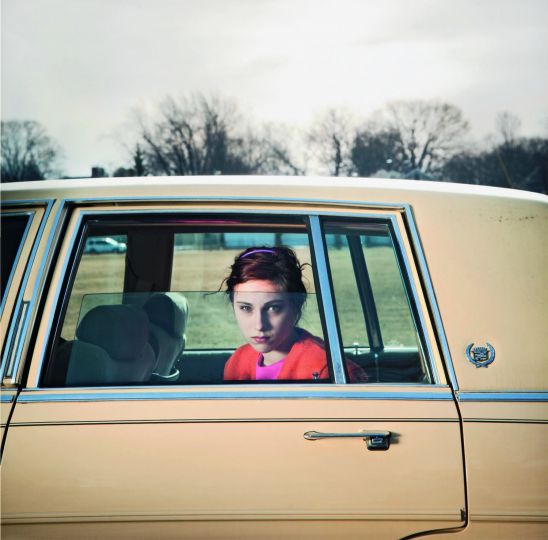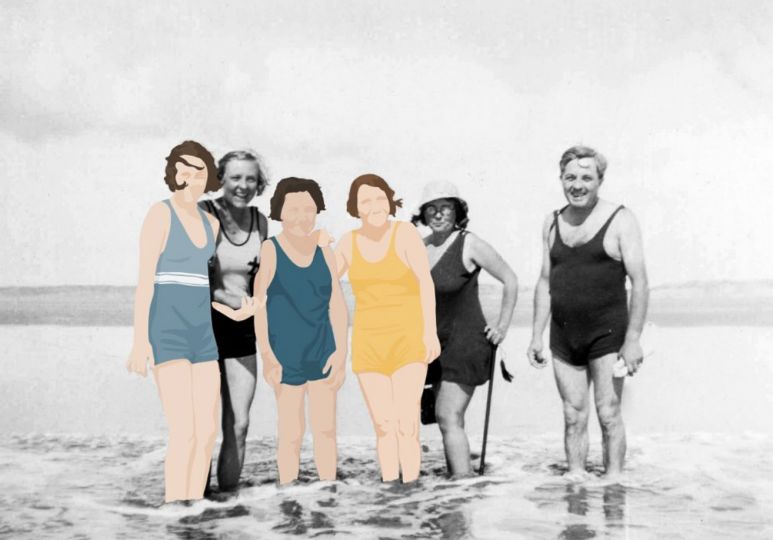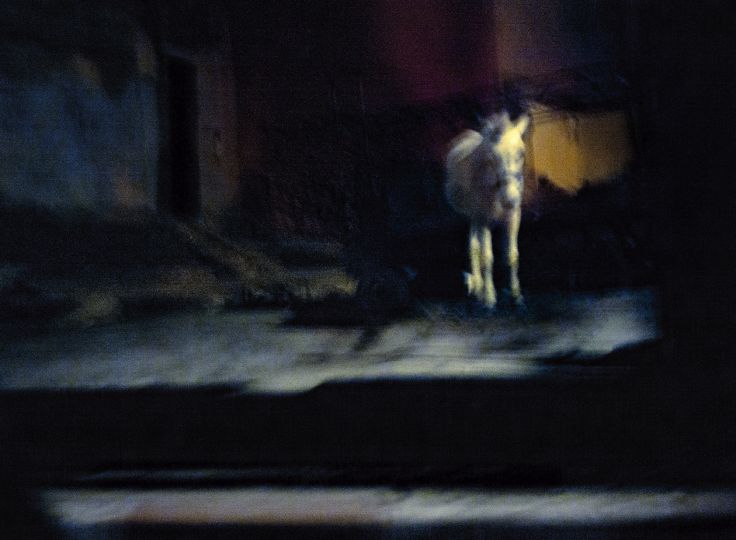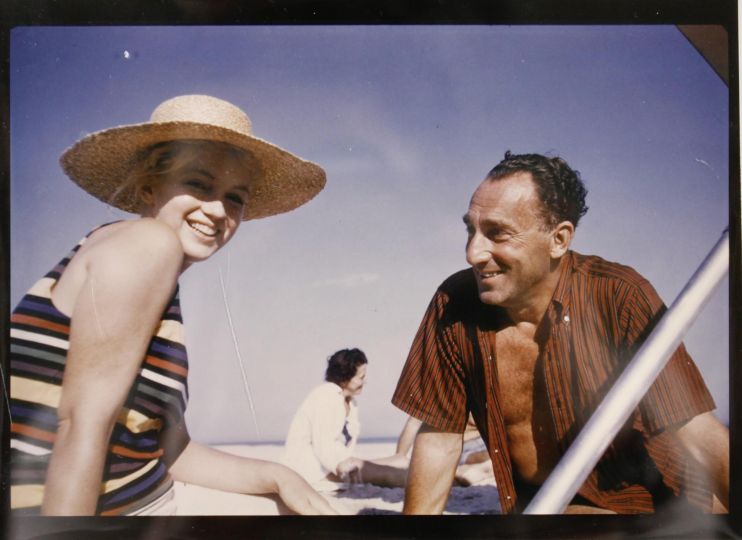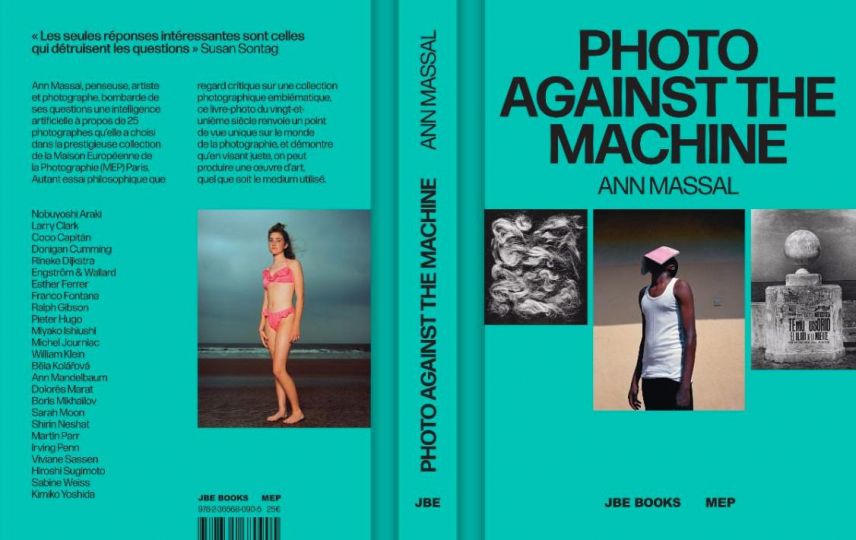A collection of photos unique in the world
“The beauty of the lines” presents a selection of 126 masterpieces from the history of photography from the exceptional collection of Sondra Gilman and Celso Gonzalez-Falla. This American couple, who lives mainly in New York and also loves France where they stay for long periods, is driven by a common passion, photography, since the discovery of the works of Eugène Atget in particular. Composed of more than 1500 photographs (almost all original), the collection honors many illustrious photographers of the twentieth and twenty-first centuries.
In the 70s, the couple began acquiring photographs. Today, this particular American collection is among the most important in the world and after being presented in Switzerland, at the Lausanne Museum organised by Tatyana Franck, director of the Elysée Museum and Pauline Martin, curator, the exhibition is presented at Yerres, at the Caillebotte Estate, from September 15 to December 2, 2018.
The French Henri Cartier Bresson and Robert Doisneau, the Germans Ilse Bing and Karl Blossfeldt, the Japanese Hiroshi Sugimoto, the Dutch Rineke Dijkstra, alongside Eugene Atget (the first acquisition by Sondra Gilman) but also the biggest American names such as Bérénice Abbott , Man Ray, Edward Weston, Robert Frank, Aaron Siskind, Ray K.Metzker, Harry Callahan, Nan Goldin, Walker Evans, Robert Adams and Lewis Baltz.
Most of the photographs, which adorn the walls of the New York’s main collectors’ home, are an integral part of their daily lives.
The link between Sondra Gilman, Celso Gonzalez-Falla and their photographs is therefore very personal. They buy following their taste, or impulse, without intermediary or advisor, without worrying about the photographer’s rating on the market. Only their desire guides them. And from this desire is born a link of exceptional intimacy with this collection.
When the line becomes masterpiece
During the course of history, photographers have oscillated between two trends: the mimetic illusion of reality, or the enhancement of the visual qualities of the image. Whether it is “instant lines” (according to Henri Cartier Bresson), rational lines, or curved lines (the human body in particular), the line can reinvent reality to abstraction. With “The Beauty of the Lines”, the exhibition explores the strength of the photographic line.
The viewer is invited to understand the different articulations of each photograph, and therefore their different types of lines.
The richness of the collection offers a stroll through the history of photography to consider the visual force of images throughout the ages. The goal is to confront masterpieces on a formal basis, to perceive that resonances often exceed temporal and geographical distances.
The photographic line is powerful and multiple, the exhibition “The beauty of lines” is divided into several sections.
The Ornate Farm of the Caillebotte Property presents for the 2nd time an exhibition of photographs. Indeed, after the exhibition in 2014 of Jules Itier, “First Photographs of China”, which presented the first photographs of China known to date (1844) in partnership with the French Museum of Photography in Bièvres, the Caillebotte Estate chose this period in order to welcome collectors in France and will resonate with the Paris Photo exhibition during which a conference will be organized around this exhibition at Sothebys, by Jonas Tebib, expert in photography, director of the Photographs department of Sotheby’s France.
Straight lines
From the controlled line to the “spontaneous” line
To document the real, the verticality and perfect parallelism of the lines are obvious for many photographers, such as the Americans Robert Adams and Lewis Baltz. This section of the exhibition invites to consider the importance of the lines of force, whether they are, or not, strictly parallel. In contrast to the romantic image, the straight line can evoke a certain coldness, a nature domesticated by the human hand.
On the other hand, in humanist photographer or photoreporter for example, the straightness of the line often becomes softer. Some vertical lines can structure the composition without being centered or parallel to the frame.
Curved lines
Nature of the body and the line
For artists who love curves, nature, the human body or the flora offer many. The American Edward Weston and the German Karl Blossfeldt were the first to move in this direction, but also Bérénice Abbott, Léon Levinstein, Robert Mapplethorpe, Bill Brandt and André Kertész, who demonstrated that the curve draws all the bodies, male and female photographed in their entirety or in detail. Freed from the imitations of painting made until then by the pictorialists, these artists prove starting in the 1920s that photography is an art in its own right.
Abstractions
The pure line
The abstractions part brings together photographs whose reference to the real is lost, allowing to consider first the lines of abstraction of the image. To try to see the line is to perceive an abstraction of reality that the image has immortalized. This is to consider the photograph before seeing the object represented. To mask the real, artists advocating abstraction, such as Americans Aaron Siskind, Ray K.Metzker and Harry Callahan, hide the real to highlight only the visual force of the image.
Maison Caillebotte
Entirely renovated, the Maison Caillebotte allows the visitor to discover the place in which lived the famous painter Gustave Caillebotte and his family. He can discover his workshop, the lounges, the billiard room, the master bedroom, the highlight of the visit, restored with the sumptuous furniture of the widow Martin Biennais, Napoleon’s goldsmith.
The property is definitely an essential cultural site in Ile-de-France ready to welcome many visitors in its gardens, its exhibition venues and in the Caillebotte House, a real witness of the lifestyle of a wealthy family under the Restoration.
The Park
The Parc Caillebotte welcomes families, walkers who discover the factories (the Swiss Chalet, the Orangery, the Cooler, the Kiosk, the Ornate Farm ..), the vegetable garden and the sculptures inherited from the various Biennials of Sculpture organized by the City of Yerres. A walk in the park allows to find the views that inspired the great impressionist painter many paintings.
Information
8 rue de Concy, 91330 Yerres Such.
01 80 37 20 61
proprietecaillebotte.com; [email protected]
Schedule
Maison Caillebotte
March 15 – December 2: Tuesday to Sunday from 14h to 18h30 December 3 – March 14: Saturday, Sunday and holidays from 14h to 18h30
Caillebotte Park
Free, open every day, schedules according to the seasons
October – March from 9h to 18h30
April – May from 9h to 20h30
June – July from 9h to 21h
August – September from 9h to 20h
Prices
Ornate Farm, exhibition center: € 8, € 3 for Yerrois Maison Caillebotte: € 8, € 3 for Yerrois
Ornée Farm + House Caillebotte: 10 €, 5 € for Yerrois, free for children under 16 years and the People with Disabilities
Annual subscription: 30 € (15 € for Yerrois) Caillebotte
Park: Free
Directions
Coming from Paris to Caillebotte Property RER D: 20 minutes from Gare de Lyon (direction Melun, Yerres stop)
At Yerres train station, 7 minutes on foot or bus (line F) Autolib station in Yerres, rue Charles de Gaulle
Co-curators of the exhibition
Tatyana Franck, Director, Elysée Museum Pauline Martin, Curator, Musée de l’Eysée
Director of the Caillebotte Property:
Valérie Dupont-Aignan
Catalog of the exhibition
“The beauty of the lines Collection Gilman and Gonzalez-Falla”
French edition co-published with Editions Noir sur Blanc. English edition co-edited with Scheidegger & Spiess. With the precious support of the Academic Society Vaudoise.
Price: 42 €
Information
Propriété Caillebotte
8 rue de Concy, 91330 Yerres, France
September 15, 2018 to December 02, 2018

